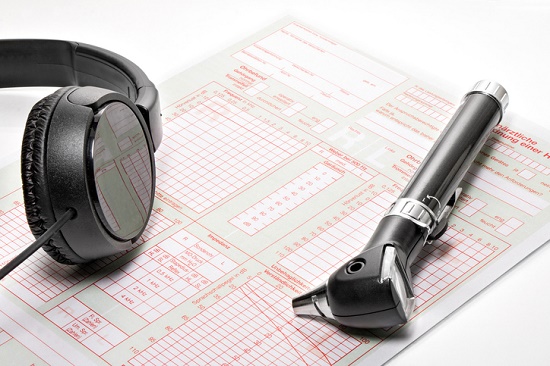
The hearing exam really is the easy part. The challenging part is accepting your hearing loss and actually setting up the hearing test in the first place.
You’ve more than likely heard the stats by now: 48 million individuals in the United States have hearing loss but only a minor fraction actually do something about it, and only 20 percent of people who could benefit from hearing aids actually make use of them.
So if you’ve already set up your hearing test, congrats, you’ve already conquered the biggest impediment to healthier hearing.
The hearing test, as you’ll witness, is an easy, non-invasive procedure that will establish the extent of your hearing loss to help develop the most suited treatment course.
After you first arrive at the office, you’ll start by filling out some paperwork. Then, you’ll meet with your hearing care professional to talk about your hearing health history.
Your Hearing Health History
Your hearing loss, if present, can be brought on by direct exposure to loud noise, the natural aging process, or by an underlying condition. You’ll want to exclude any underlying conditions prior to moving on to the actual hearing exam.
If you have an earwax impaction, as an example, you may very well be hearing better within a few minutes after a professional cleaning. The existence of any other ailments will be assessed and the appropriate referral made, if necessary.
After going over your basic medical history, you’ll discuss your subjection to loud sounds, your hearing loss symptoms, and exactly what you would like to achieve with better hearing.
It’s vital to determine possible causes, how symptoms are influencing your life, and how better hearing will enhance your life, which is after all the entire point. Be wary of the practitioner that doesn’t appear to really care about the main reasons why you want to improve your hearing to begin with.
The Hearing Test
There’s one more step to take before beginning the hearing test: the visual investigation of the ear with an instrument called an otoscope. This will help rule out any problems with the ear canal, the eardrum, or the elevated accumulation of earwax.
Next, you’ll be escorted to a sound-treated room with your hearing care professional. You’ll be instructed to wear headphones, and the specialist will begin to play you some sounds.
You’ll be presented with various sounds at different frequencies, and you’ll be asked to identify the quietest sounds you can hear at each pitch. This is labeled your hearing threshold, and the hearing care professional will record these values on a graph known as an audiogram.
The hearing exam may also include speech testing, where you’ll be instructed to repeat the words delivered to you. Various types of words, delivered at various volumes with and without background noise, will be presented. This will help determine if hearing aids can help you with speech understanding.
At the conclusion of the testing, your hearing care professional will discuss the final results with you.
Assessing Your Hearing Test Results
Referring to your audiogram, your hearing care professional will now discuss your hearing in both ears. Depending on the results, your hearing will be classified as normal or as displaying mild, moderate, severe, or profound hearing loss.
If a hearing loss is found, the next move is talking about your treatment options. Seeing that there are no present medical or surgical treatments to restore hearing damage, this means assessing your hearing aid options.
Today’s hearing aids are available in a mix of shapes, sizes, and colors, at different price points with several sophisticated features. In choosing your hearing aids, it’s important to work with a qualified hearing care professional for three main reasons:
- They can help you identify the ideal hearing aid model to satisfy all of your goals.
- They can help you identify the advanced features you need—along with the ones you don’t—at a price that suits your budget.
- They can program your new hearing aids to amplify only the sounds you have trouble hearing—established by the hearing test—ensuring optimal sound quality.
And that’s it, a quick, easy process in return for a lifetime of healthier hearing. We’d say that’s a very good deal.
We look forward to seeing you!